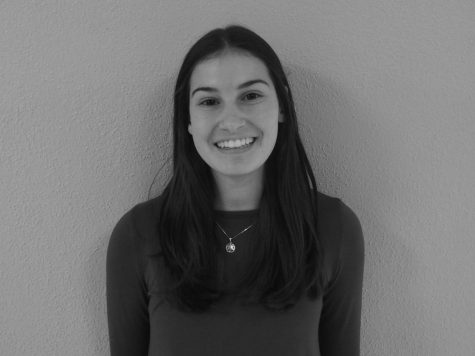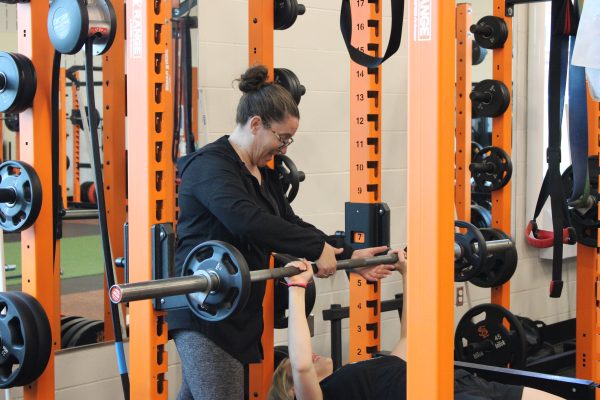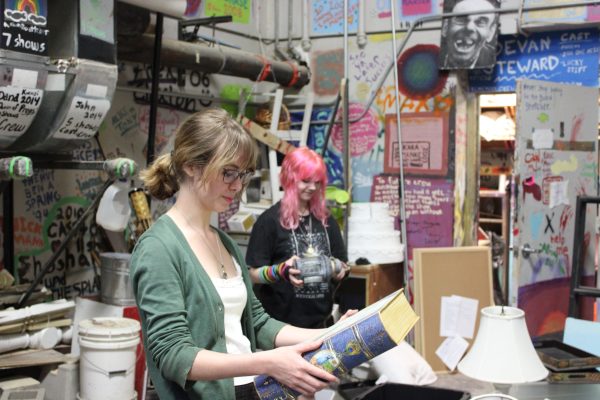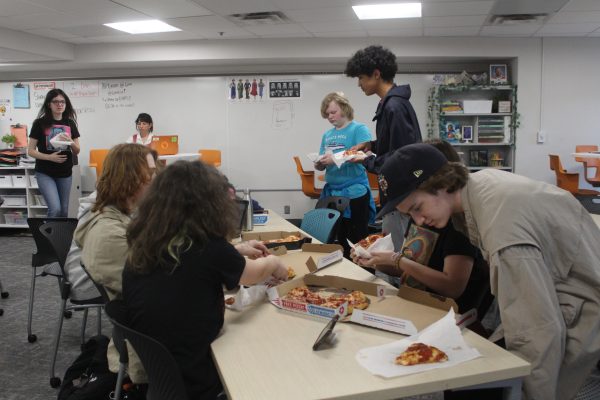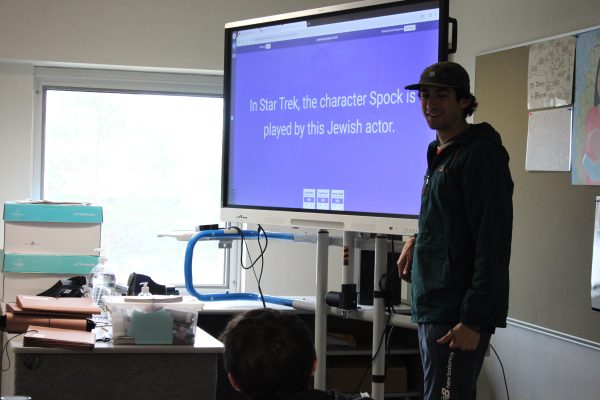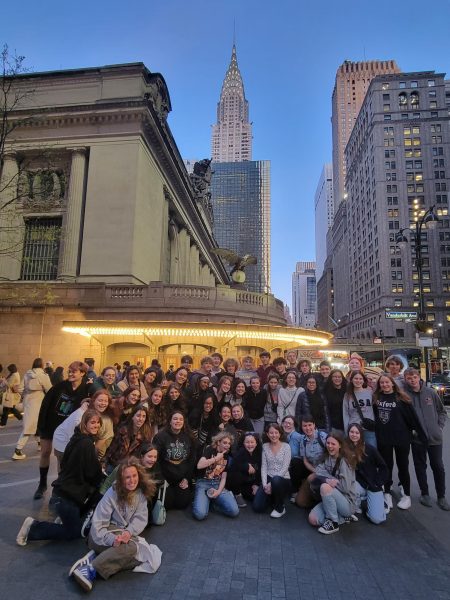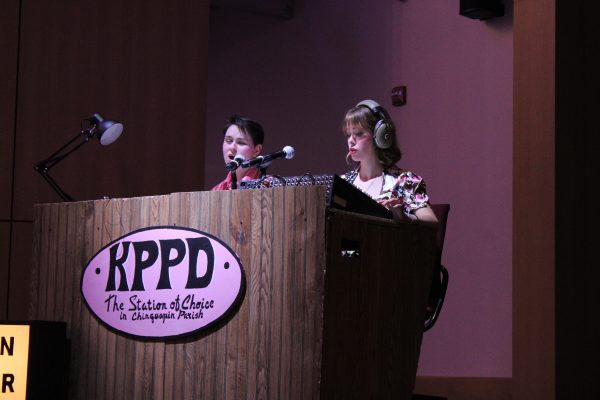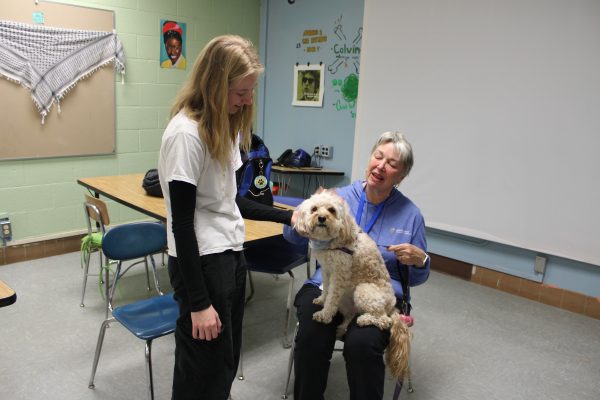NTA provides solution for alternative learning styles
Participants apply as juniors
Senior Non-Traditional Academy students Erika Wilson and Salma Elmi work with NTA physics teacher Mark Miller on determining the density of eggs Sept. 27. NTA seeks to provide students with alternate approaches to learning.
September 29, 2017
Reflecting on her goals for her final year in high school, senior Non-Traditional Academy student Rahma Farah said she hopes to graduate along with all the other students in her Non-Traditional Academy class.
“(My goal is) that I graduate and everyone else graduates along with me because I don’t want to leave anyone else behind,” Farah said. “(NTA) is a very nice and caring space and there’s no drama or anything like involving that, so it’s a very calm area.”
Non-Traditional Academy(NTA) English teacher Andrew Carlson said the process of becoming an NTA student begins in the spring of a student’s junior year.
“Around the beginning of fourth quarter, the teaching staff will receive an NTA interest form,” Carlson said. “Students will fill out a interest form, then you set up interviews with Chris Weaver, who runs the interviews with other teachers. They’ll interview the students to see why they would prefer to join the NTA program, what they might get out of it (and) what their goal is post high school.”
Farah said a teacher recommended her to the NTA program and after an interview was accepted into the program.
“(In the interview), first (program head Chris Weaver and other teachers) would ask you why you think you need to be in NTA and why you want to be in NTA, and they’ll ask you what are some accomplishments that you’ve done,” Farah said. “They’ll ask what do you struggle with during a normal classroom and what are your strengths and other questions like that.”
According to Carlson, the NTA staff might approach students asking them if NTA would be a good fit, but other teachers can recommend students as well.
“I don’t know if it’s publicized or not, Chris Weaver, who is the head of that program, usually takes that on, and I think in the past, it’s just been a word of mouth thing,” Carlson said.
Farah said the style of NTA classrooms suit her learning style better than regular classes.
“NTA lets you do your own thing. They will tell you what to do, but they’ll let you do it your own way and I work well in that kind of environment, like I’ll do it how I want to do it,” Farah said. “You work well with the teachers and they understand what you need and how you need to do it.”
Carlson said he is one of the four NTA teachers who teach NTA students during periods two through five.
“Deb (Debra) Skadden does social studies, Liz Huesing does math and Mark Miller does science,” Carlson said.
Farah said the different environment of NTA required a little adjustment, but she is reaping the benefits of the program, now, after that adjustment.
At first it was hard to get used to the whole change in the environment, but once you get the hang of it it’s very easy and fun because everyone kind of knows each other,” Farah said.
According to Carlson, this year’s NTA class consists of 33 students which is similar to last year’s class size after some students dropped out. He said a few kids typically drop out of the program.
“We find out at some points that the program isn’t one that works for (some students) or the program’s not what they thought it was,” Carlson said.
Senior Ian McIntyre said after watching friends of his go through the NTA program, he thinks NTA really helps its students graduate high school, but doesn’t prepare them for the realities of post-high school life.
“(NTA) is beneficial for the students, it helps them get through highschool, but I don’t think it prepares them enough to get out into the world,” McIntyre said.
Carlson said NTA’s goals focus mainly on graduation and the students’ post-graduation plans.
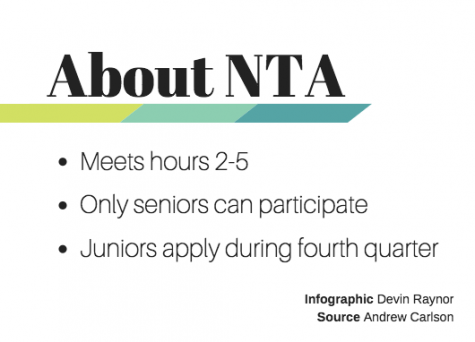
“I think we approach things differently each year based on the students, but just like most of the seniors, the number one goal each year is graduation and kind of figuring out where you want to go once graduation is over with and where you can find support once you’re out of the high school,” Carlson said.
Contact NTA program director Chris Weaver in the learning lab for more information about what NTA does.




